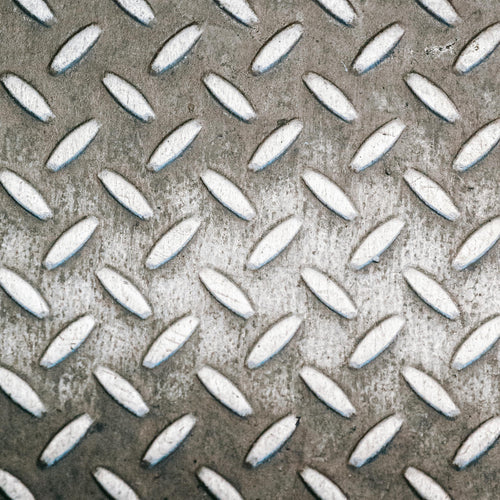Flexible Dentures
If you’ve lost teeth or had to have them extracted, you have a few options for replacing them. Dentures are by far the most popular, since they are cost effective and minimally invasive.
The most permanent – and expensive – option is to have dental implants installed. Putting aside the high cost, dental implants involve drilling into the jaw and installing titanium screws which hold the tooth in place. Since implants are so invasive, it’s no wonder that most people will opt for partial dentures.
What are partial dentures?
Partial dentures (or partials) are dental appliances that fit into the mouth in order to replace missing teeth. The term “partial” simply refers to the fact that they are replacing a few teeth, and not your entire set.
These appliances are crafted by specialized dental technicians to match your jaw and dentition. They are made of various materials using techniques that have evolved over the last several decades.
What are the different types of dentures?
Dentures or partials can be made in one of three ways. The first, and most traditional way is to use a combination of cobalt metal and porcelain. This results in dentures that are durable but unnatural and inflexible.
The second method involves making dentures out of acrylic resin, which fits better and can be dyed for a more natural appearance. In these first two cases, the dentures are typically secured to the existing teeth using metal clasps.
The third and most recently developed method is to make dentures out of nylon, which yields natural looking, extremely flexible dentures that don’t require special clasps to stay in place. These are generally referred to as flexible dentures, thermoplastic dentures, or by the name of the company that makes them, such as TCS or Valplast.
What are flexible dentures?
Flexible or thermoplastic dentures don’t look like the traditional dentures you might have seen an elderly person wearing in years gone by. They are natural-looking, pliable pink dentures that fit over the gums, holding replacement teeth in place.
Since they don’t use metal clasps to be held in place, there are no tell-tale signs that you are wearing flexible partials. They fit so naturally to the contours of your mouth that they don’t require adhesive either.
How are flexible dentures made?
Flexible dentures are made by injecting nylon resin into a carefully crafted mold. Once it dries, the mold is removed and the flexible partials are fitted to the patient’s mouth.
The real craft and artistry comes into play when creating the mold. It has to be a precise reflection of the patient’s mouth in order to create a partial that will fit perfectly.
The first step involves taking a bite impression from the patient. This involves impression wax, which will record the exact shape of the patient’s teeth and gums. Unlike traditional dentures, there is very little tooth preparation involved in crafting flexible dentures.
A shade selection process is then carried out in order to match the shade of the flexible partials to the patients’ natural gum and tooth colour.
The next step is to create a mold which reflects the contours of the patient’s bite impression. Various specialized dental waxes are used in this step, including linqual bar wax and palate wax. These waxes are specifically formulated for this process. They have exactly the right melting points, malleability and adhesiveness to create precise wax molds.
At this point, adjustments can be made to ensure that the wax mold accurately reflects the patient’s teeth and gum contours. This stage is often referred to as the wax setup/try-in stage.
This stage enables the clinician to double-check the shade accuracy and the tooth and jaw setup arrangement — midline, vertical dimension, and centric occlusion.
Once the mold is created, the nylon is injected into it. This involves creating a channel for the liquid nylon to travel through called a sprue. This is where specialized dental sprue wax comes into play.
Finally the mold is removed, and the partial is fitted to the patient’s mouth. Final adjustments are made if necessary.
What are the drawbacks of flexible dentures?
The main drawback of flexible dentures vs. traditional dentures would be cost. Flexible thermoplastic dentures are generally more expensive.
Flexible dentures also can take more time to craft than traditional ones.
Flexible dentures need to be cleaned more thoroughly than rigid ones, since they are more prone to bacteria buildup. Fortunately, they are easy to clean and maintain. You can remove and brush them as you would normal teeth.
Finally, the materials used to make flexible dentures might not be suitable for all patients.
Who shouldn’t use flexible partials?
As great as flexible dentures are, they aren’t suitable for all patients. They are not recommended in the following cases:
- Deep bites where upper anteriors cover lower anteriors
- Minimal vertical clearance, less than 3mm
- Poor soft tissue support or few remaining teeth
- Flat ridge
- Immediate applications
Flexible dentures: a great option overall
Generally speaking, flexible dentures don’t have many drawbacks and are suitable for most people. They are more comfortable, secure, and natural looking than traditional dentures – as long as they are properly crafted with the right materials and applied by qualified experts.
While they aren’t recommended in certain specific cases, most people who are looking for a relatively cost-effective, convenient option to replace teeth should definitely ask their dentist about flexible thermoplastic dentures.


















1 comment
Zitouni ridha
Comment faire pour ne pas avoir des bulles d’air dans la résine thermoplastique
Merci
Comment faire pour ne pas avoir des bulles d’air dans la résine thermoplastique
Merci